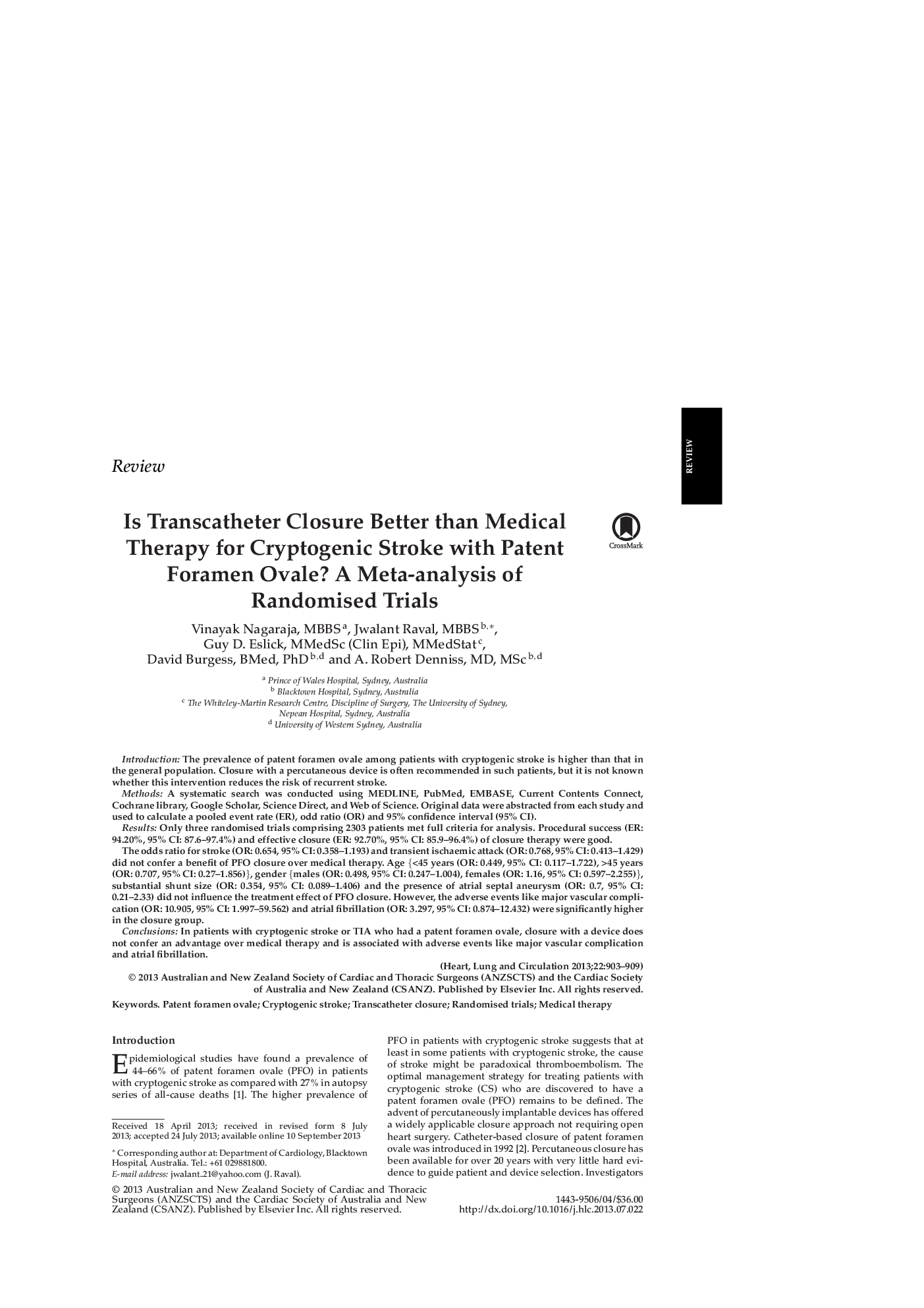| Article ID | Journal | Published Year | Pages | File Type |
|---|---|---|---|---|
| 2917461 | Heart, Lung and Circulation | 2013 | 7 Pages |
IntroductionThe prevalence of patent foramen ovale among patients with cryptogenic stroke is higher than that in the general population. Closure with a percutaneous device is often recommended in such patients, but it is not known whether this intervention reduces the risk of recurrent stroke.MethodsA systematic search was conducted using MEDLINE, PubMed, EMBASE, Current Contents Connect, Cochrane library, Google Scholar, Science Direct, and Web of Science. Original data were abstracted from each study and used to calculate a pooled event rate (ER), odd ratio (OR) and 95% confidence interval (95% CI).ResultsOnly three randomised trials comprising 2303 patients met full criteria for analysis. Procedural success (ER: 94.20%, 95% CI: 87.6–97.4%) and effective closure (ER: 92.70%, 95% CI: 85.9–96.4%) of closure therapy were good.The odds ratio for stroke (OR: 0.654, 95% CI: 0.358–1.193) and transient ischaemic attack (OR: 0.768, 95% CI: 0.413–1.429) did not confer a benefit of PFO closure over medical therapy. Age {<45 years (OR: 0.449, 95% CI: 0.117–1.722), >45 years (OR: 0.707, 95% CI: 0.27–1.856)}, gender {males (OR: 0.498, 95% CI: 0.247–1.004), females (OR: 1.16, 95% CI: 0.597–2.255)}, substantial shunt size (OR: 0.354, 95% CI: 0.089–1.406) and the presence of atrial septal aneurysm (OR: 0.7, 95% CI: 0.21–2.33) did not influence the treatment effect of PFO closure. However, the adverse events like major vascular complication (OR: 10.905, 95% CI: 1.997–59.562) and atrial fibrillation (OR: 3.297, 95% CI: 0.874–12.432) were significantly higher in the closure group.ConclusionsIn patients with cryptogenic stroke or TIA who had a patent foramen ovale, closure with a device does not confer an advantage over medical therapy and is associated with adverse events like major vascular complication and atrial fibrillation.
